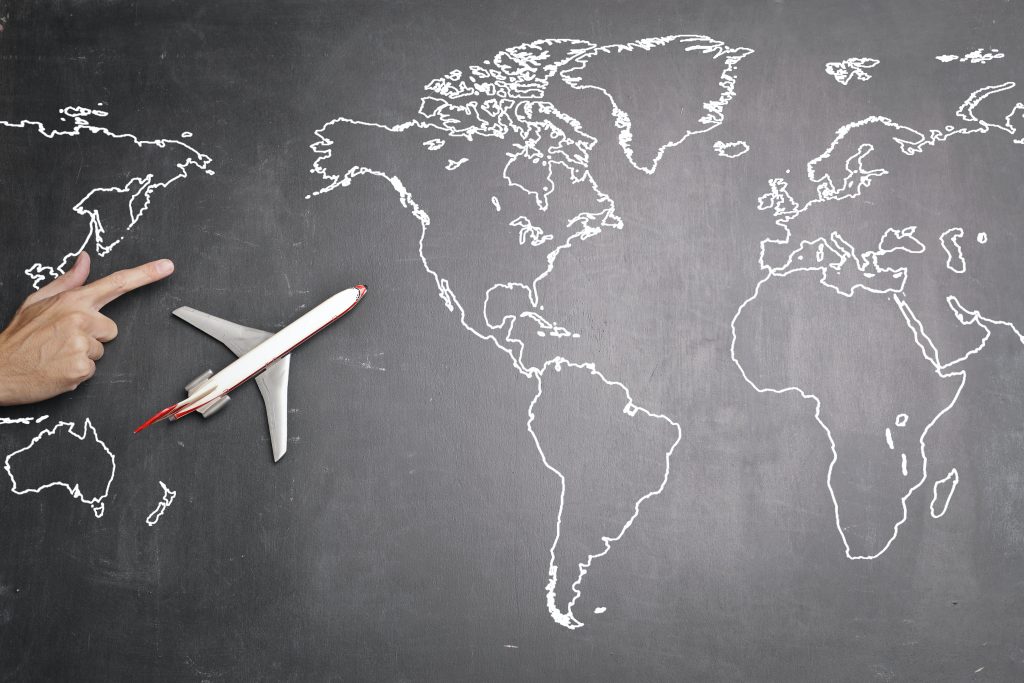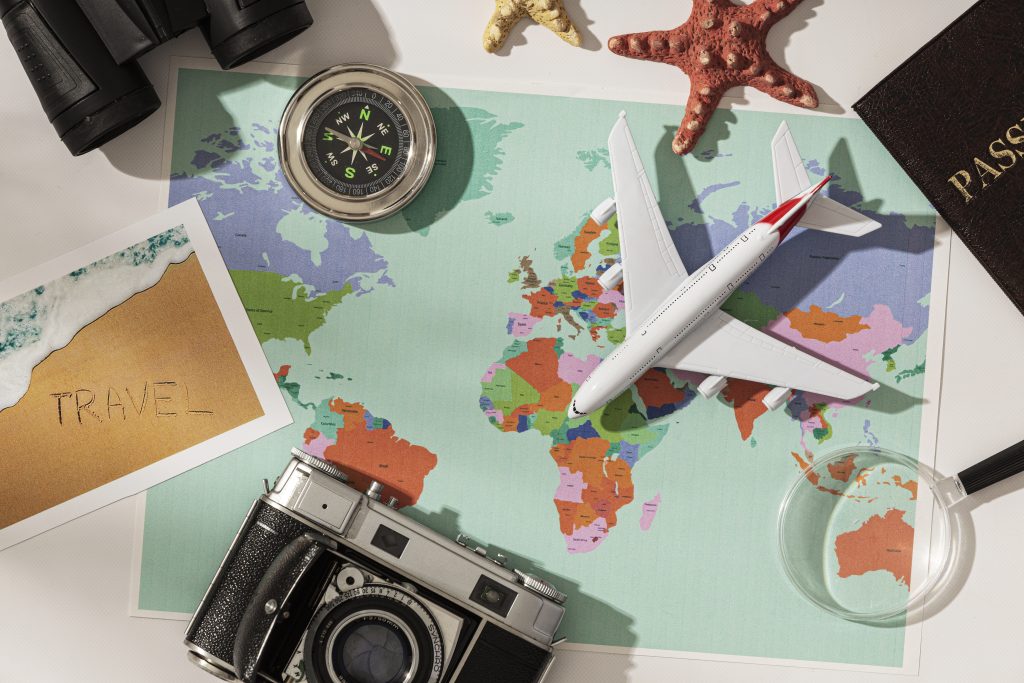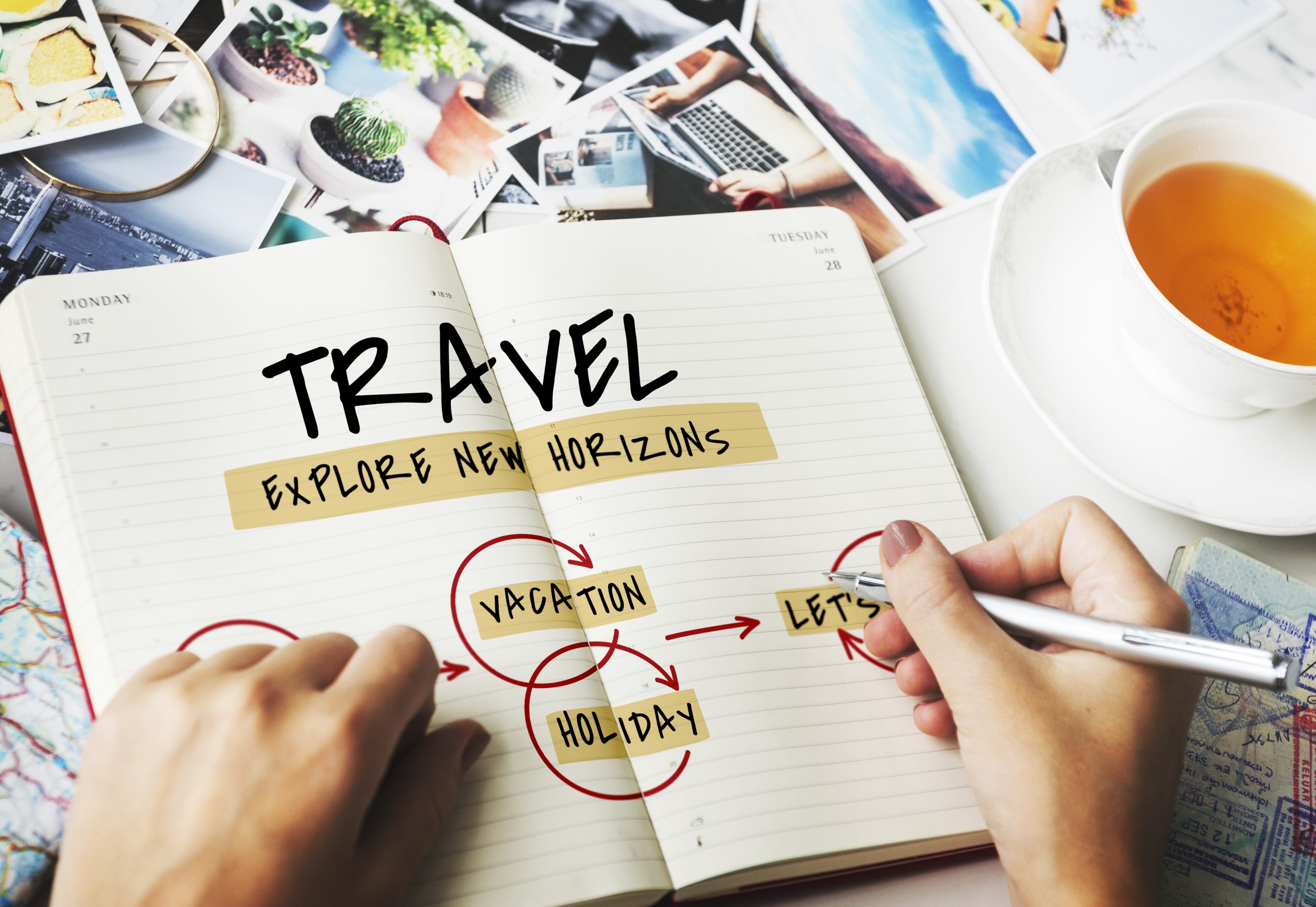Introduction:
Travel And Tourism- printing continues to hold a special place in captivating and inspiring audiences like no other medium can. Whether it’s glossy brochures enticing wanderlust, vibrant travel guides unveiling hidden gems, or stunning photographs capturing the essence of a destination, print materials have the power to transport individuals to far-flung places and awaken their sense of adventure.
In this era of fleeting online content, where attention spans are increasingly limited, the tangible nature of printed materials offers a unique opportunity to engage with travelers on a deeper level. The weight of a well-designed travel magazine in hand, the texture of a beautifully crafted postcard, or the thrill of unfolding a detailed map all contribute to an immersive experience that stimulates curiosity and fuels the desire to explore.
By combining compelling visuals, persuasive narratives, and practical information, printed materials provide a holistic representation of a travel destination, leaving a lasting impression on potential visitors. They serve as tangible souvenirs, encouraging individuals to cherish their travel memories long after their journeys have ended.
We will uncover the various ways in which print materials can inspire and captivate audiences, from enticing vacation brochures and travel guides to innovative printing techniques that evoke a sense of wonder. Join us on this journey as we discover the enduring power of print in the realm of travel and tourism, and unlock the secrets to inspiring your audience through the tactile allure of beautifully printed materials.
What is print media in tourism?
Print media, such as brochures, posters, and maps should correspond with effective promotional objectives: convenience, destination choice, and satisfaction. The information about the destination, which is required by tourists, is also an important means of promotion for the tourism industry.
Print media in tourism refers to the use of traditional printed materials as a means of communication and promotion within the travel and tourism industry. It encompasses a wide range of physical materials, such as brochures, flyers, maps, guidebooks, magazines, and newspapers, that are specifically designed to inform, engage, and inspire travelers. Print media has long been a staple in the tourism industry, providing tangible resources that allow tourists to plan their trips, discover new destinations, and make informed decisions.
One of the primary purposes of print media in tourism is to showcase the unique features and attractions of a particular destination. Travel brochures, for example, offer a visually appealing snapshot of a location, highlighting its natural landscapes, cultural heritage, historical sites, and recreational activities. These materials serve as persuasive tools, enticing potential travelers with vivid imagery and captivating descriptions. They create a sense of anticipation and excitement, igniting the desire to explore new places.
Print media also plays a crucial role in providing practical information and guidance to travelers. Maps, guidebooks, and city directories are invaluable resources that offer navigation assistance, essential tips, and recommendations for accommodations, dining options, and local services. They provide a tangible reference that travelers can carry with them, ensuring easy access to important information even in areas with limited internet connectivity. Moreover, print media offers a sense of reliability and trustworthiness, as tourists can physically hold and refer to these materials at their convenience.

What is the importance of printing?
Print media is one of the best ways to get information out to people. When someone receives a flyer, for example, they are able to read the information at their own pace and as many times as they wish. They can keep the flyer to consult later at their own leisure.
The importance of printing cannot be overstated in today’s digital age. Printing plays a vital role in various aspects of our lives, from personal to professional, and from education to communication. One of the primary reasons for its importance is the tangibility and permanence it offers. Unlike digital content that can be easily lost or deleted, printed materials provide a physical presence that can be held, stored, and referenced at any time. This quality is especially valuable in fields such as education, where textbooks and printed resources serve as reliable references for students and educators alike.
Printing also enables widespread dissemination of information. Whether it’s newspapers, magazines, brochures, or flyers, printed materials have the ability to reach a broad audience across different demographics and geographic locations. They provide a means of communication that doesn’t require access to the internet or electronic devices, making them inclusive and accessible to a wider population. Additionally, printed materials can be distributed in various public spaces, increasing their visibility and reach.
Professionally designed and printed materials convey a sense of legitimacy and reliability. When information is presented in a polished and well-organized manner, it enhances the perceived value and trustworthiness of the content. For businesses, printed materials such as business cards, brochures, and catalogs act as tangible representations of their brand and offerings, leaving a lasting impression on potential customers.
What are the benefits of tourism?
Tourism offers great opportunities for emerging economies and developing countries. It creates jobs, strengthens the local economy, contributes to local infrastructure development and can help to conserve the natural environment and cultural assets and traditions, and to reduce poverty and inequality.
Tourism brings with it a multitude of benefits that have a significant impact on individuals, communities, and economies worldwide. One of the primary advantages of tourism is its contribution to economic growth. It stimulates local businesses and industries, creating job opportunities and generating revenue. Tourism expenditures support a wide range of sectors, including transportation, hospitality, food services, entertainment, and retail, thus boosting economic development and improving the standard of living for residents in tourist destinations.
As travelers explore different regions and interact with local communities, they gain insights into diverse cultures, traditions, and ways of life. This exchange of knowledge and experiences promotes tolerance, appreciation, and respect for different cultures, ultimately fostering global harmony and unity.
Tourism also plays a pivotal role in preserving and conserving natural and cultural heritage. Many tourist destinations rely on their unique attractions, such as national parks, historical sites, and cultural landmarks, to attract visitors. Consequently, the need to protect and preserve these resources becomes paramount. Tourism revenue often supports conservation efforts, ensuring the sustainability of natural and cultural treasures for future generations.

What are the printed media used in tourism?
Print media, such as brochures, posters, and maps should correspond with effective promotional objectives: convenience, destination choice, and satisfaction. The information about the destination, which is required by tourists, is also an important means of promotion for the tourism industry.
Printed media plays a significant role in the field of tourism, providing a tangible and informative medium to promote destinations, attractions, and services. Several types of printed media are utilized within the tourism industry to capture the attention of travelers and assist them in planning their journeys. One of the most prevalent forms is brochures, which are compact, visually appealing pamphlets containing vivid descriptions, maps, and photographs of destinations, accommodations, and activities.
Brochures serve as a handy guide that travelers can easily carry and consult while exploring new places. Another widely used printed medium is travel magazines, which offer in-depth articles, features, and recommendations on various destinations worldwide. These publications often include stunning imagery, insider tips, and inspiring stories, attracting potential tourists and igniting their wanderlust. Additionally, guidebooks have been a staple in tourism for decades, serving as comprehensive references that provide detailed information about a particular location’s history, culture, attractions, and practicalities such as transportation, accommodation, and dining options. Guidebooks cater to different interests and budgets, enabling travelers to tailor their experiences accordingly.
Posters and flyers also hold value in tourism promotion, as they can be displayed in travel agencies, airports, hotels, and visitor centers to grab attention and inform passersby about upcoming events, tours, and special offers. Furthermore, newspapers and travel supplements in newspapers offer a platform for destination-specific articles, travel features, and advertisements, reaching a wide audience and generating interest in different travel experiences.
What are the materials used in tourism marketing?
They are described as the collection of media , such as brochures, leaflets, posters , flyers , postcards and websites, used to support the sales of tourism products. These materials, like any advertising materials, can be obtained free of charge.
Tourism marketing utilizes a variety of materials to effectively promote destinations, attractions, and services to potential travelers. These materials are designed to capture attention, inspire wanderlust, and provide essential information to prospective tourists. Some common materials used in tourism marketing include brochures, flyers, posters, guidebooks, maps, websites, social media content, videos, photographs, and promotional merchandise.
Brochures and flyers are popular printed materials that provide a snapshot of a destination’s highlights, attractions, accommodations, and activities. They are visually appealing and often include captivating images, enticing descriptions, and contact information for further inquiries. Posters serve a similar purpose, but on a larger scale, grabbing attention in high-traffic areas and conveying key messages in a concise and eye-catching manner.
Guidebooks play a crucial role in providing comprehensive information about a destination. They include detailed descriptions of attractions, suggested itineraries, practical tips, and local insights. Guidebooks offer a tangible resource that travelers can carry with them, providing reliable information even without internet access.
Maps are essential tools for tourists, offering visual representation and navigation assistance. They provide an overview of a destination’s layout, highlighting key landmarks, attractions, and points of interest. Maps can be distributed in various formats, including print and digital, ensuring easy accessibility for travelers.

What role does printing for travel travel literature play in inspiring wanderlust?
Printed travel literature plays a significant role in inspiring wanderlust by transporting readers to new destinations, capturing their imagination, and igniting a sense of adventure. Travel books, magazines, and guides provide a tangible and immersive experience that digital content often fails to replicate. Through vivid descriptions, captivating narratives, and stunning visuals, printed travel literature paints a rich and enticing picture of different places, cultures, and experiences.
One of the primary roles of printed travel literature is to evoke a sense of curiosity and fascination. By delving into the pages of a travel book or flipping through the glossy images of a magazine, readers are transported to distant lands, exotic locales, and hidden gems they may have never considered before. The detailed accounts of unique landscapes, vibrant cities, and diverse cultures awaken a desire to explore and experience the world beyond their own familiar surroundings.
By presenting these details in a storytelling format, travel literature goes beyond mere facts and figures, creating a more immersive experience that connects readers on an emotional level. This deeper understanding and appreciation of a destination’s cultural richness and significance enhance the allure and desire to visit.
Travel memoirs, essays, and narratives allow readers to follow in the footsteps of adventurers, explorers, and travel enthusiasts who have ventured into the unknown. These personal accounts capture the spirit of discovery, offering insights into the joys, challenges, and transformative power of travel. They instill a sense of possibility and inspire readers to embark on their own journeys, seeking similar transformative experiences and moments of self-discovery.
How can print media contribute to creating memorable travel itineraries?
Print media has a significant role in creating memorable travel itineraries by providing valuable information, inspiring exploration, and offering a tangible reference during the trip. Travel guidebooks, brochures, and maps are key print media that contribute to crafting unforgettable travel experiences.
Travel guidebooks are comprehensive resources that provide detailed information about destinations, attractions, accommodations, dining options, transportation, and local customs. They help travelers plan their itineraries by offering suggested routes, highlighting must-see sights, and providing insider tips. Guidebooks act as trusted companions, enabling travelers to make informed decisions and optimize their time, ensuring they don’t miss out on any hidden gems or unique experiences.
Brochures play a crucial role in showcasing the diverse array of activities, attractions, and services available at a destination. They provide visually appealing snapshots of key highlights, helping travelers prioritize their interests and tailor their itineraries accordingly. From outdoor adventures to cultural events and culinary experiences, brochures offer a glimpse into the myriad of options, making it easier for travelers to curate a personalized and memorable travel plan.
Printed maps, whether city maps or regional maps, are invaluable tools for navigating and exploring a destination. They help travelers familiarize themselves with the layout, identify key landmarks, and plan efficient routes. Maps offer a tangible reference that can be carried conveniently during the trip, eliminating the reliance on internet connectivity or digital devices.

What are the key advantages of using printing for travel maps for tourists?
Using printed maps offers several key advantages for tourists, enhancing their navigation, orientation, and overall travel experience. One of the primary advantages is the reliability and accessibility of printed maps. Unlike digital maps that may depend on internet connectivity or battery life, printed maps are readily available and can be used anytime and anywhere. They eliminate the need for electronic devices, ensuring that tourists can navigate even in remote areas or locations with limited technology infrastructure.
Printed maps also provide a holistic view of a destination’s layout and geography. They offer a tangible representation of the surrounding area, allowing tourists to understand the relationship between different landmarks, streets, and neighborhoods. This comprehensive overview enables better spatial orientation and helps tourists plan efficient routes and itineraries.
By physically engaging with a map, tourists actively participate in the navigation process, tracing routes, and identifying points of interest. This tactile experience enhances the connection with the destination, empowering tourists to make informed decisions and independently explore their surroundings. It allows for serendipitous discoveries and encourages a more immersive and memorable travel experience.
Conclusion:
The art of printing continues to hold immense value in the realm of travel and tourism. While digital platforms have revolutionized the way we access information, print materials possess a unique ability to captivate and inspire audiences in ways that digital content cannot replicate. The tangible nature of printed materials creates a sensory experience that immerses travelers and sparks their wanderlust.
From glossy brochures and travel guides to postcards and maps, print materials serve as powerful tools for destination marketing. They bridge the gap between the virtual and physical worlds, providing a tangible representation of a travel experience and leaving a lasting impression on potential visitors. Print materials also serve as cherished souvenirs, preserving travel memories and evoking nostalgia long after the journey has ended.
In a world inundated with digital information, print materials offer a refreshing and engaging alternative. They provide a tangible and immersive experience that stimulates curiosity, ignites the imagination, and ultimately inspires individuals to explore the world. So, embrace the enduring power of print in travel and tourism, and let it be your guide in inspiring your audience to embark on unforgettable journeys.



